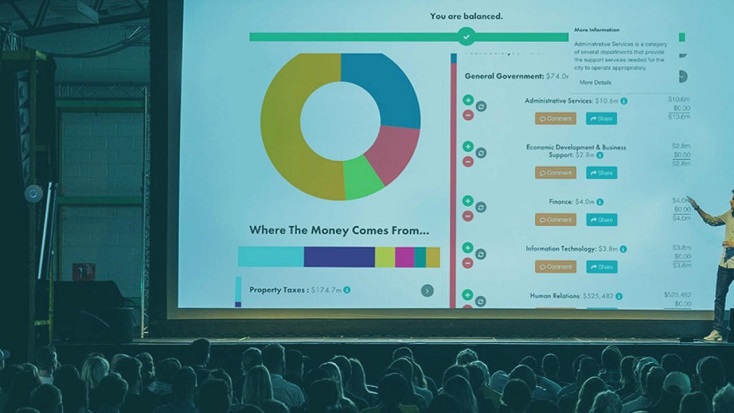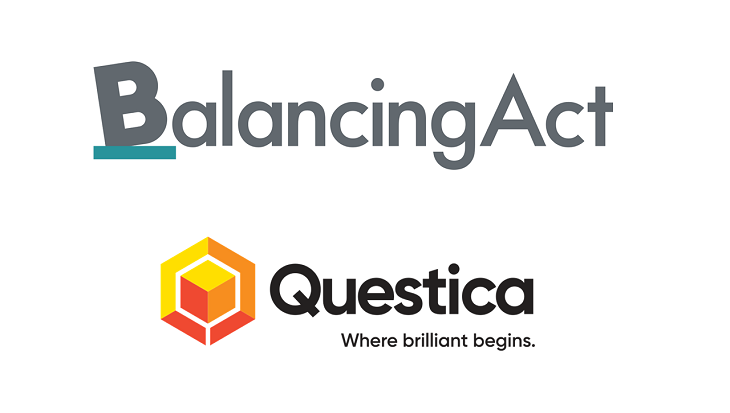An annual budget is a powerful statement about the priorities a government holds for a community. The budgeting process allocates taxpayer dollars to programs and services that play a key role in determining a community’s quality of life. If citizens believe the government is not efficiently managing finances, they may be less willing to accept budget cuts and tax increases. When citizens want to know where public money is being spent, how can a government effectively respond?
Benefits of citizen engagement
The Government Finance Officers Association recommends public participation as a best practice to help governments be more accountable and responsive, and to improve public perception of how a government performs on their behalf.
Public engagement has proven to be valuable in helping citizens understand the hard choices governments face during the budgeting process, and for creating support for the final budget. Transparency about government finances is an important part of earning the public’s trust and confidence. Citizens expect the government to share information and provide opportunities for the public to have a say in how taxpayer dollars are spent.
Budget simulation models
Budget engagement may mean holding public meetings, sending a survey or publishing a document. These methods may provide a better perspective of what citizens want and expect from the government, but they don’t provide citizens with full insight into the budget decision-making process or how funds are allocated.
With new online tools such as budget simulation models, citizens can see where money is allocated and get hands-on experience with the budgeting process. The simulation provides the government’s financial data in a visual format allowing users a deep dive into major revenue and expense categories. Increasing funds in one category means that something else must be decreased (or revenues raised,) in order to satisfy the primary requirement that the budget is balanced. Upon completion, users can submit their version of the budget to the government.
Choosing a budget simulator
When a government is looking for the right budget simulation tool for their organization, the following should be taken into consideration:
Easy to implement
Governments don’t have time for installation issues. The simulator should integrate smoothly with the government’s current budgeting software and any other financial systems.
User-friendly interface
The time of citizens is also valuable and expectations for a user-friendly format are high. An easy to use interface meets both of these demands.
Visually appealing
Complex information is easier to understand with a budget simulator that uses charts, tables and dashboards to display information. Data visualization helps users understand the budget and see where money is allocated.
Interactive
A budget simulator that allows users to drill down to the sub-categories of major revenue and expense categories, as well as provide comments online, by email or social media will engage citizens in the budgeting process.
Providing the narrative
Storytelling is a powerful tool. Helping citizens understand the story of a budget year can create a better buy-in for the financial decisions that have to be made by the government.
Usable both online and face-to-face
Access to a simulator online, whether on your desktop, phone or tablet, greatly expands the number of users. However, sometimes engagement happens in face-to-face settings, such as town halls or citizen groups. The best solutions support both types of interaction.
Showing stakeholders where taxpayer dollars are being spent is easy with a budget simulation tool. By being transparent about their finances, governments can gain the trust of citizens and increase public participation during the budgeting process.
To learn more, read about Questica’s new partnership with Balancing Act to provide better transparency and citizen engagement for governments.
Questica software is a fast way to improve transparency
For government organizations looking to improve transparency, the most powerful tool is software that is easy to learn and easy to use. OpenBook, Questica’s data visualization software, offers government agencies the easy, intuitive software they need. We present financial and non-financial data with descriptive text, informational pop-ups, charts, and graphs. It also seamlessly integrates with Questica Budget, our comprehensive budget preparation and management software. Questica understands the demand for transparency and we’ve built our software to address and accommodate that demand. We know you don’t have time to be struggling with a difficult interface, so our software is easy to manage and integrates with your existing financial and human resources systems. You can rest assured that Questica will help you and your city, town, county or agency achieve your goals.
We are a passionate team of technology experts and business specialists with decades of collective experience managing finances and budgeting software. You’ll be amazed at how much time and energy your agency will save with software like Questica’s OpenBook. To learn more about Questica and how our software can help you, read a case study or take a product tour.





